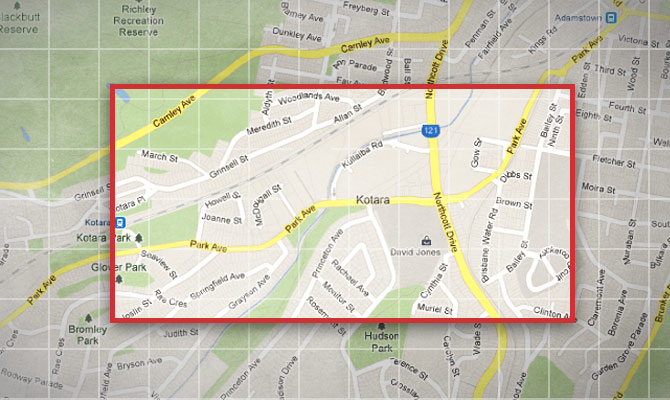
Beware? ‘Weapons of Mass Destruction’

Photo courtesy of Thierry Boudan
I was reading in the paper last weekend a comment by a disgruntled person about graffiti (with spray paint cans referred to rather dramatically as “weapons of mass destruction”). I can appreciate the angst caused by senseless defacing of property and I feel for business owners who have to spend their time and money to clean it off, perhaps time and time again. However, to refer to cans of spray paint as weapons of mass destruction? To me, that seems to belittle human life and the destruction that comes with Oppenheim’s creation. Though, it does bring up the reoccurring discussion about graffiti - is it art? I won’t open Pandora’s box with discussing the definition of art, however, I would like to look at the history of graffiti and it’s contemporary existence.

A Drawing From Pech Merle, 10 000 to 15 000 years old (Image courtesy of Lynda Jellman)
The oldest example is Dappled Horses of Pech-Merle from the Gravettian Period c. 25,000BC, located in the French Pech-Merle Cave. In this Palaeolithic cave art, horses have been depicted with great naturalism using charcoal and ochre on limestone. There is also evidence of the first stencils in the form of hand stencils. Tens of thousands of years later, this art practice is still being used in Newcastle and around the world. Limestone walls are now concrete, charcoal and ochre now brightly coloured manufactured spray paint.
Note: I would like to make the point that vandalistic‘tags’ have no consideration for traditional artistic techniques. They are simply a lazy act purely for the ego of the vandal and should not be considered in the same category as graffiti art.
Many well-known artists began their careers on the walls of subway stations and cityscapes. Kenny Scharf, Jean-Michel Basquiat and Keith Haring, possibly best known for his Absolut Vodka images, created some fantastic, albeit controversial, images in the New York subways in the 1980’s. 1981 saw the rise

Banksy's "Graffiti Removal" (Image courtesy of Ethur)
of Parisian stencil graffiti artist Blek le Rat. The 80’s and 90’s also saw (or didn’t see if you are familiar with the reclusive nature of the artist) the popularity of British political activist and graffiti artist Banksy, who is currently the subject of his first film, Exit Through the Gift Shop, 2010.
Locally, throughout Newcastle, you can see both tags (unfortunately) and graffiti. 27,000 years on, even though humans now have access to canvas and other contemporary support, graffiti is still as popular (with the makers and many viewers) as ever. Perhaps as humans, it is our raw, primitive nature and our need to communicate without restraint that will never be extinct.
Are you a street artist? Tell us what you love about it. Or perhaps you have a favourite piece of street art you’d like to share?






As a photographer I love graffiti. The lines, the colours bring an image to life. I really believe it is art. On the flip side of that is tagging which I see as just people doodling their name.
I am always ont he search for amazing graffiti art to use in my photoshoots. I was very disappointed when the Newcastle council painted over the great graffiti art at the Newcastle skatepark by the beach and replaced them with disgusting green paint and big signs everywhere saying no painting on the walls. Come on Newcastle council, if other major cities recognise the need for youth to express themselves through graffiti art then why can’t we just refresh the walls with fresh paint every 2 years and let the walls fill up with amazing art.
Just my 2 cents
Love art be it on the street, grafitti or in a gallery. Not fussed with the tagging.
I really like the new one in Charles st Cooks Hill. Fantastic vibrant colours.
Hosier Lane in Melbourne has some of the best graffiti art. Took a few photos last year which are on Flickr.
So true Laura. Graffiti is an extension of a human need to make their mark in the world not to destroy it.
This is a great article. It is important for people to realise the above facts when considering the terms graffiti and vandalism. There is an even a further distinction before graffiti and street art.
Newcastle has been subjected to years of local media amplifing the situation of vandalism, instead of raising the issue that the Newcastle City Council Public Art Policy is not inclusive of these contemporary artforms.
The National Gallery of Australia just had an amazing street art exhibition call ‘Space Invaders’. They even have street art stencil acquired in the Printmaking acquisitions department.
I want Newcastle to embrace the art of graffiti and celebrate good quality aerosol skills.
I have been starting street art projects over the last year in the Hunter St Mall and it has reduced vandalism!
A very informative article Laura, however, I do not agree totally with all the views expressed. As an artist I can appreciate a well executed tag. yep. While I have to say there are plenty of poorly executed examples around my neighbourhood that do look unsightly, every so often I spot a tag that has the smoothest of lines, from a typography viewpoint; the letters are well dispositioned, from a design perspective shows form and aesthetically IS pleasing to the eye. Please, do not get me wrong here, I’m not fully condoning this act and my own residence has infact been the target of some pretty woeful tagging efforts in the past. I think what we do have to remember is all the big players out there today doing those fantastic throw-ups, have at some point in their career also practiced “tagging’. Many still do. As one commenter states “Graffiti is an extension of human need to make their mark….” —so too is Graffiti to tagging, an extension. Please people do not forget the building blocks, like it or not. The word Graffiti actually arose around the 18th century in Pompeii to describe the writings etched on the walls, interestingly enough these early forms of graffiti were more akin to today’s tagging. Tagging will never go away, for a writer it’s a natural evolution. To a vandal, true it is about ego and being noticed…I could draw many comparisons to the art world here and even advertising, but I won’t go there. What we can do however, through articles such as this, is alter peoples perceptions of art in the public forum and through programs such as SAW it may just steer aspiring artists in the right direction. Here’s some links that may just change peoples views a little. The first is from Barry McGee aka TWIST, a world renowned artist who was part of the infamous Beautiful Losers (if you haven’t seen the film SEE IT!) and who also happens to have a piece in the Art Gallery of NSW collection. An old Melbourne tag http://www.flickr.com/photos/65618242@N00/31526828 and a whole wall that was commissioned not too long ago, taking it back to his roots. http://www.highsnobiety.com/news/2010/08/31/barry-mcgee-houston-street-mural/
The next link is just darn inspiring, from Steven Powers aka Espo (another Beautiful Loser) who also comes from graff roots and is doing big things all around the world for art in public spaces. enjoy. http://www.youtube.com/watch?v=e9bkEOGVO0k
Simone, that is fantastic. Please ensure you keep us/ urbaninsider up to date with your projects. I am about to go and look up Space Invaders. Surely if it is good enough for the National Gallery of Australia, it is good enough for Newcastle.
I love tagging. it is the true nature of graffiti and it should never be forgotten. street art is a vehicle to make this culture “readable” to those outside of this culture. let’s be clear on that: it’s got it’s motivation from graffiti-graffiti never stops and it’s good that not everyone can read the signs. it all sprung from political and/or social protest. no one can stop this protest as it is the most purest and non-violent form of protest that is.
You know - classical music is art too. I wonder how long it would take for the kiddies to complain if we blasted the local skate park with Beethoven & Tchaikovsky?
Every artwork has it’s place - and we shouldn’t be forced to consume it.